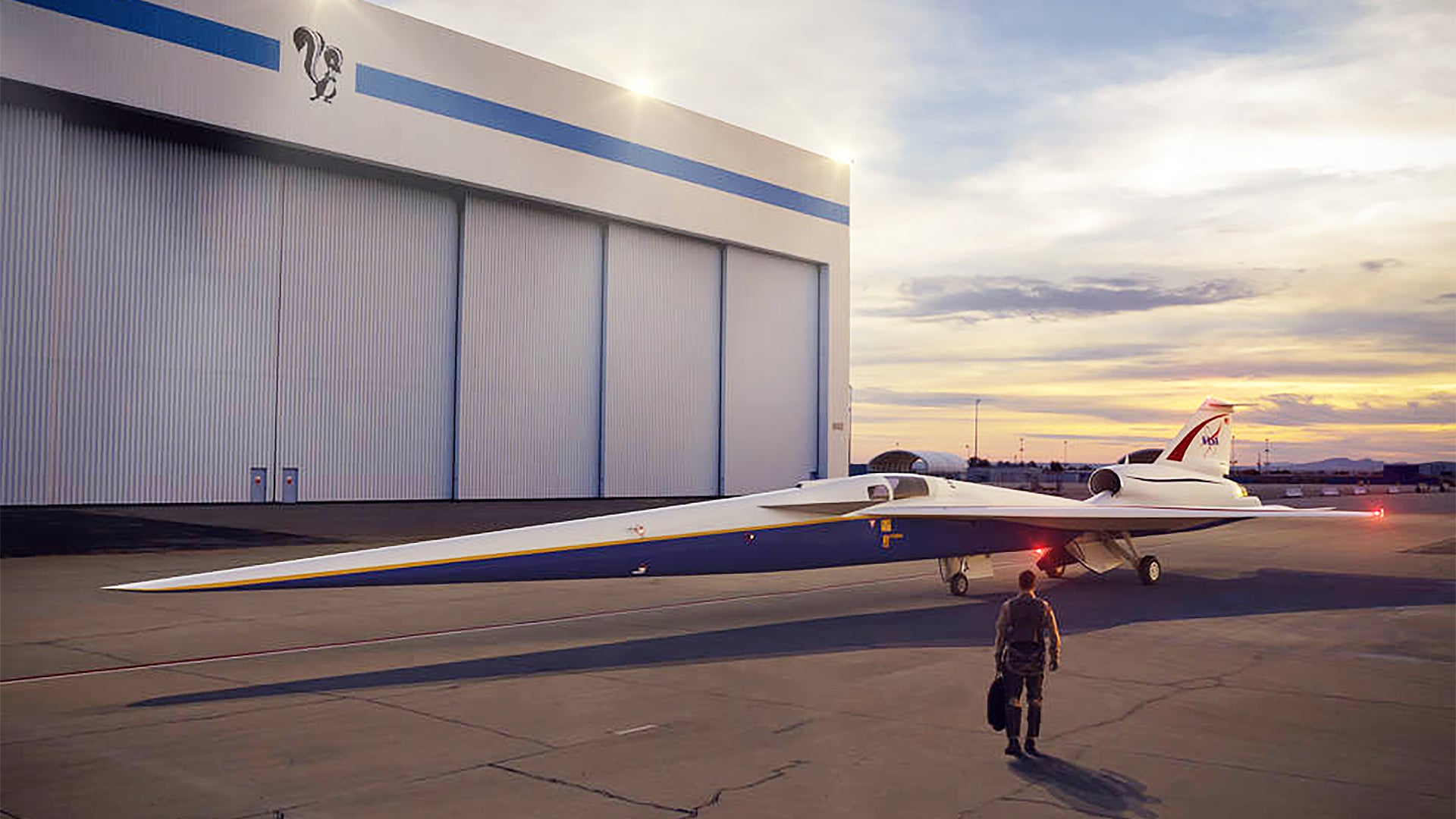Speed has never gone out of style, but efforts to prioritize it when it comes to flight sure has. But all that is changing on both commercial and military fronts. Maybe the biggest indication of this aeronautical revolution of sorts is NASA’s March 3rd, 2018 announcement that it is diving back into the manned x-plane game in a major way in the form of the Quiet Supersonic Transport, or QueSST, aircraft, which is part of the agency’s ambitious low-boom flight demonstration initiative.
This piloted flying spike of an airplane will be built by Lockheed’s legendary Skunk Works for a cool $247.5M and is scheduled to be delivered to Armstrong Flight Research Center by the end of 2021.
This announcement is truly a glorious one for aerospace aficionados that have felt disillusioned by a promised supersonic air travel future that never really materialized. The one aircraft that did spend decades ferrying travelers at supersonic speeds, the Concorde, has been out of service for 15 years now, and exist as a page in aerospace history books and as museum pieces scattered around the western world.
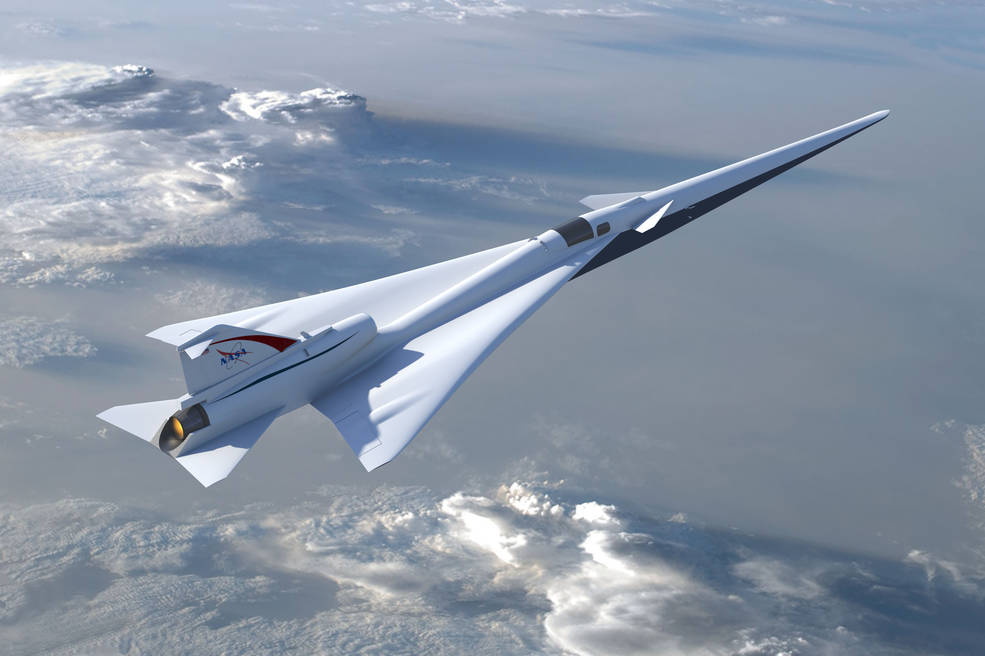
NASA’s goal with this x-plane is to prove that supersonic flight doesn’t have to result in a thunderous booms heard on the ground—a key factor that doomed Concorde’s own business case. Currently supersonic flight over land is banned except for the military, and they can only fly supersonically under emergency circumstances or in designated and remote airspace. So any supersonic transport aircraft would have to throttle back to subsonic speeds during transits over the ground, that is unless they integrate new design technologies that the Low-Boom Demonstration is hopefully going to prove.
The jet, which will be powered by a single General Electric F414 turbofan—the same engine used on the Navy’s Super Hornet—won’t just be used for collecting data over desolate test ranges. Instead NASA wants to fly it over populated areas so that its scientists can gain real-world data that can be used to evaluate the feasibility of constant operational supersonic travel over such locales. People’s perceptions of the audible signature of the jet as it flies over will be one data set that NASA is going to build during the QueSST’s trials.
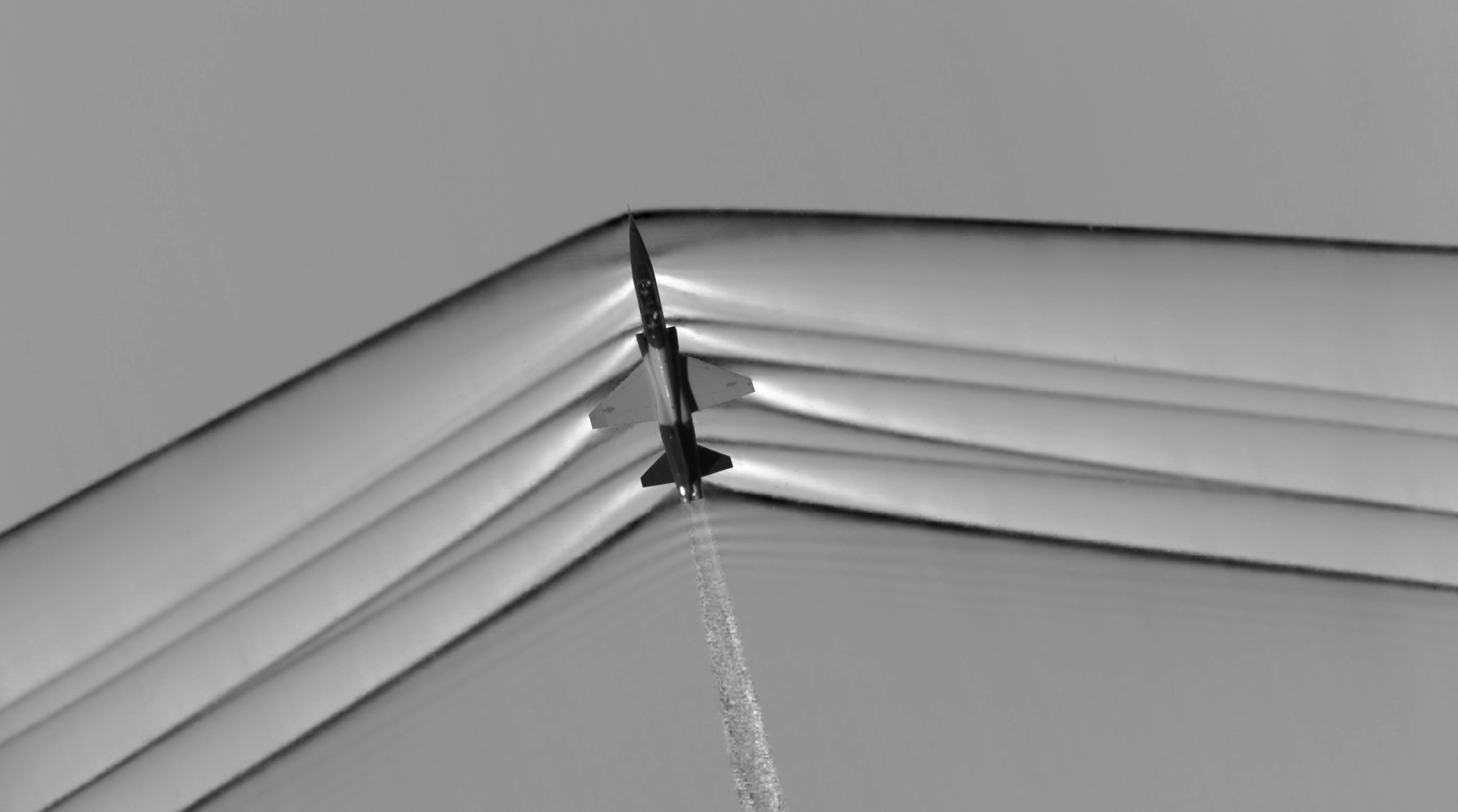
The aircraft’s shape is supposed to keep shock waves from converging, and thus significantly lowering the audible signature of the aircraft as it travels at supersonic speed. In a press release, NASA stated:
“The answer to how the X-plane’s design makes a quiet sonic boom is in the way its uniquely-shaped hull generates supersonic shockwaves. Shockwaves from a conventional aircraft design coalesce as they expand away from the airplane’s nose and tail, resulting in two distinct and thunderous sonic booms.
But the design’s shape sends those shockwaves away from the aircraft in a way that prevents them from coming together in two loud booms. Instead, the much weaker shockwaves reach the ground still separated, which will be heard as a quick series of soft thumps – again, if anyone standing outside notices them at all.
It’s an idea first theorized during the 1960s and tested by NASA and others during the years since, including flying from 2003-2004 an F-5E Tiger fighter jet modified with a uniquely-shaped nose, which proved the boom-reducing theory was sound.
NASA’s confidence in the Low-Boom Flight Demonstration design is buoyed by its more recent research using results from the latest in wind-tunnel testing, and advanced computer simulation tools, and actual flight testing.”
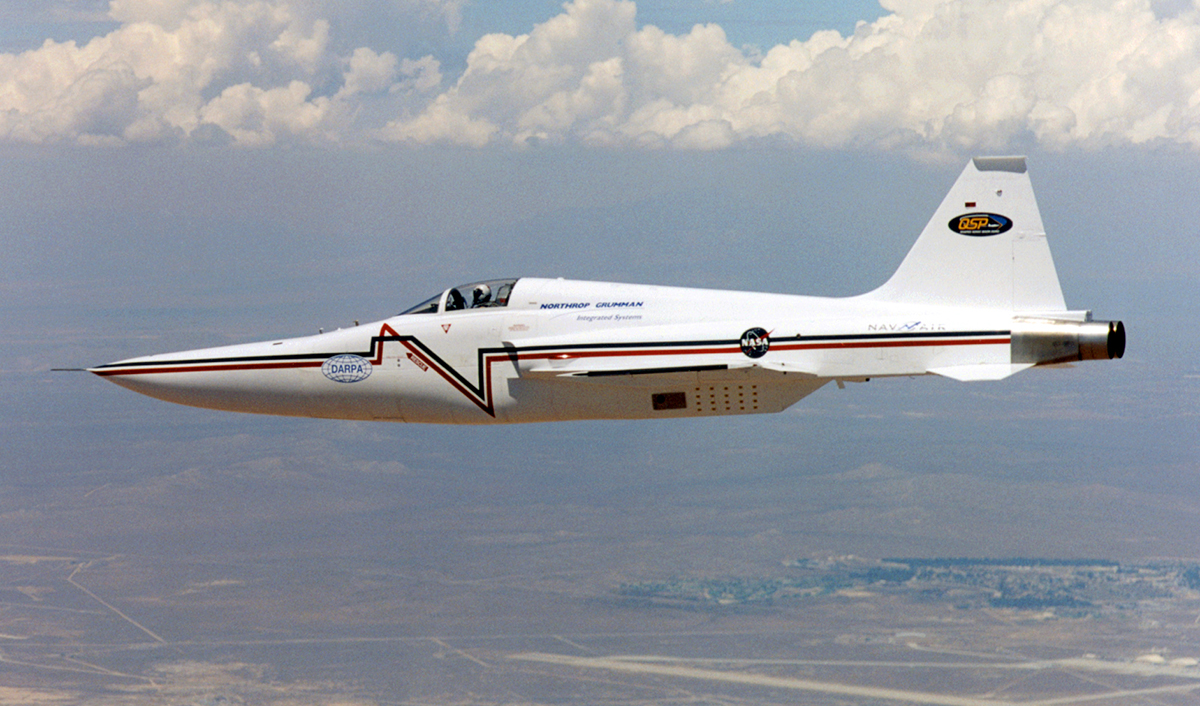
As for the aircraft itself, it was largely designed as the result of a contract awarded to Lockheed in 2016 and will be 94 feet long while having a wingspan of just 29.5 feet. Its gross takeoff weight is set at 32,500lbs, which is akin to the unloaded and unfueled weight of an F-15E Strike Eagle.
Once built, the craft is supposed to cruise at 55,000 feet and mach 1.42 or 940mph. This is about the same performance as an F-22 while executing a supercruise dash. It will top out at mach 1.5 and its cockpit configuration will be based on the rear cockpit of a T-38 Talon trainer. As you can see in the concept art, the pilot will have no forward view and will likely have to rely on instruments and a closed circuit video stream or a periscope-like arrangement for navigation.


Once Lockheed’s own pilots check the jet out for safe flight, two NASA test pilots will take its reins for the test program. NASA’s pilots are already working with Lockheed on the cockpit layout and the simulators that will be used to train in preparation for the test flights.
Jim Less is one of those pilots, and he is clearly excited to be part of what has become a rare aeronautical enterprise:
“A supersonic manned X-plane! This is probably going to be a once-in-a-lifetime opportunity for me. We’re all pretty excited… It’s pretty rare in a test pilot’s career that he can be involved in everything from the design phase to the flight phase, and really the whole life of the program.”
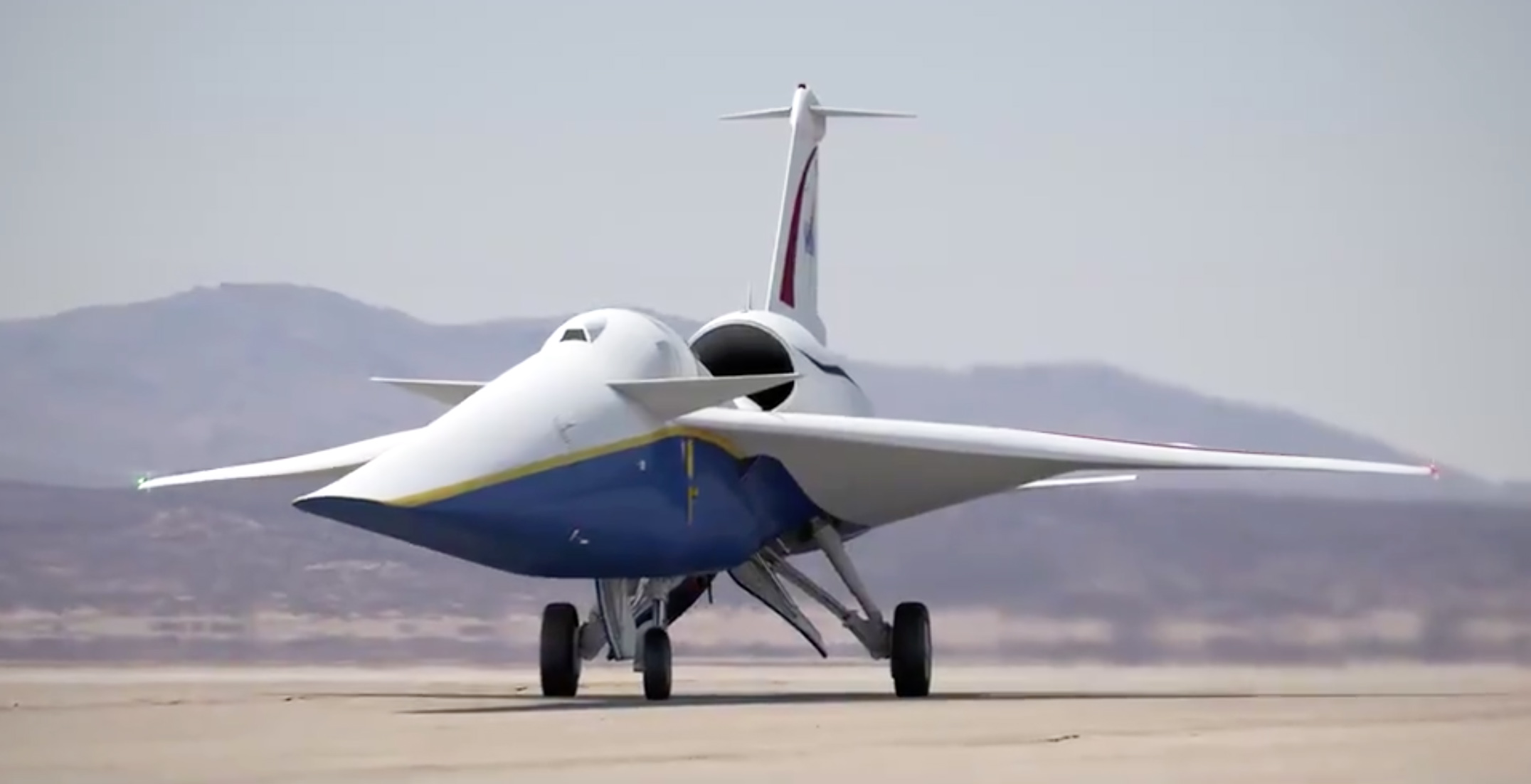
NASA has progressively stepped away from building and flying manned x-planes due to a number of factors, with cost being a preeminent one. The agency has also put a larger focus on simulation and the use of unmanned sub-scale demonstration aircraft to achieve more limited flight testing goals. This is a far cry from the 1950s, 1960s, and 1970s, when fleets of exotic NASA x-planes were highly active out of Dryden Flight Research Center at Edwards AFB.
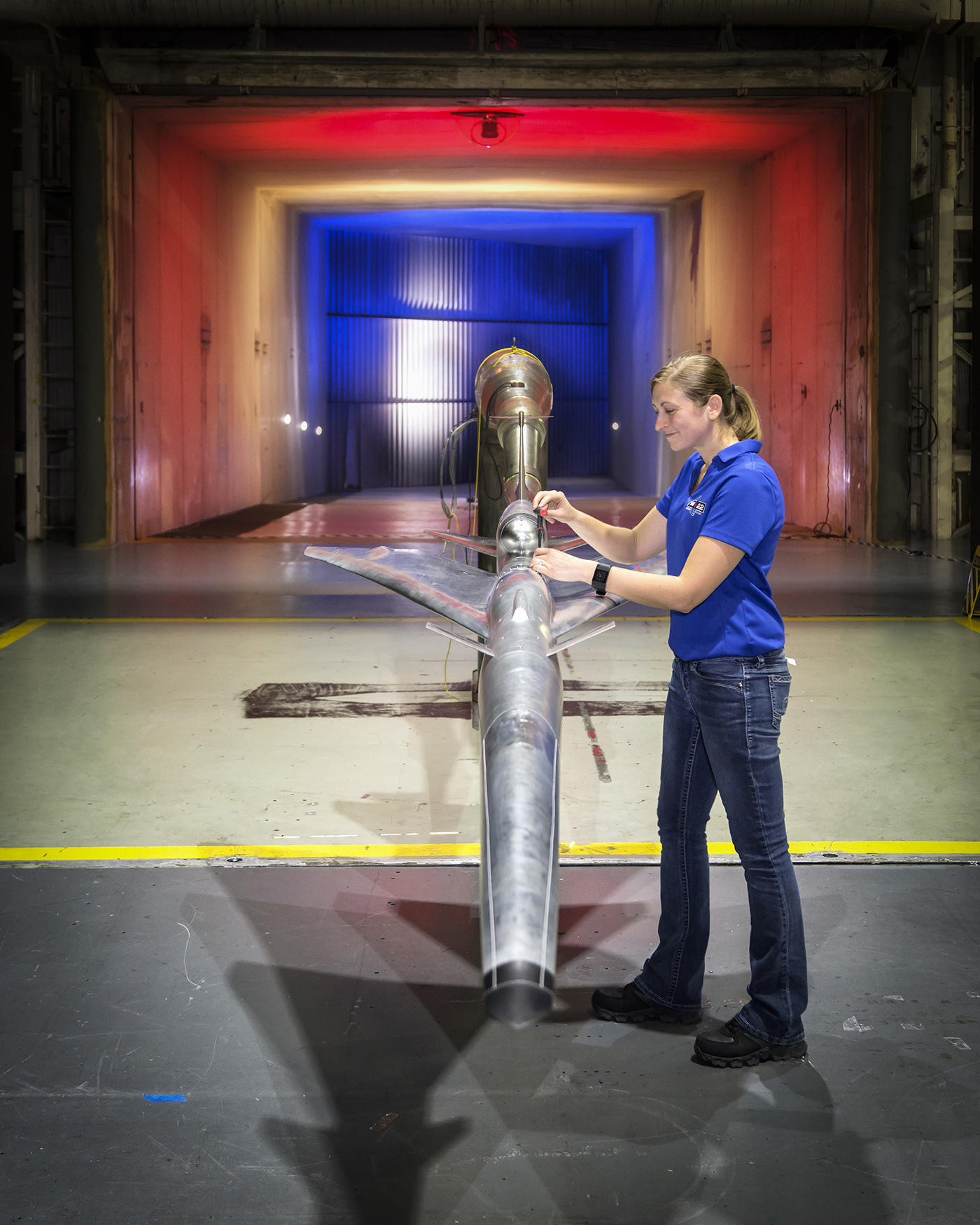
Clearly the stakes are quite high with this new x-plane program. Acoustically acceptable supersonic travel over land could revolutionize air travel and it comes at a time when supersonic transport aircraft are getting serious financial and corporate backing.
Lockheed is now deeply involved with the Aerion Corporation who is aiming to build a supersonic business jet, and that aircraft, dubbed the AS2 could have big military applications as well. In fact, Lockheed seems to be situating itself in a particularly strategic position to potentially lead the supersonic air travel revolution.
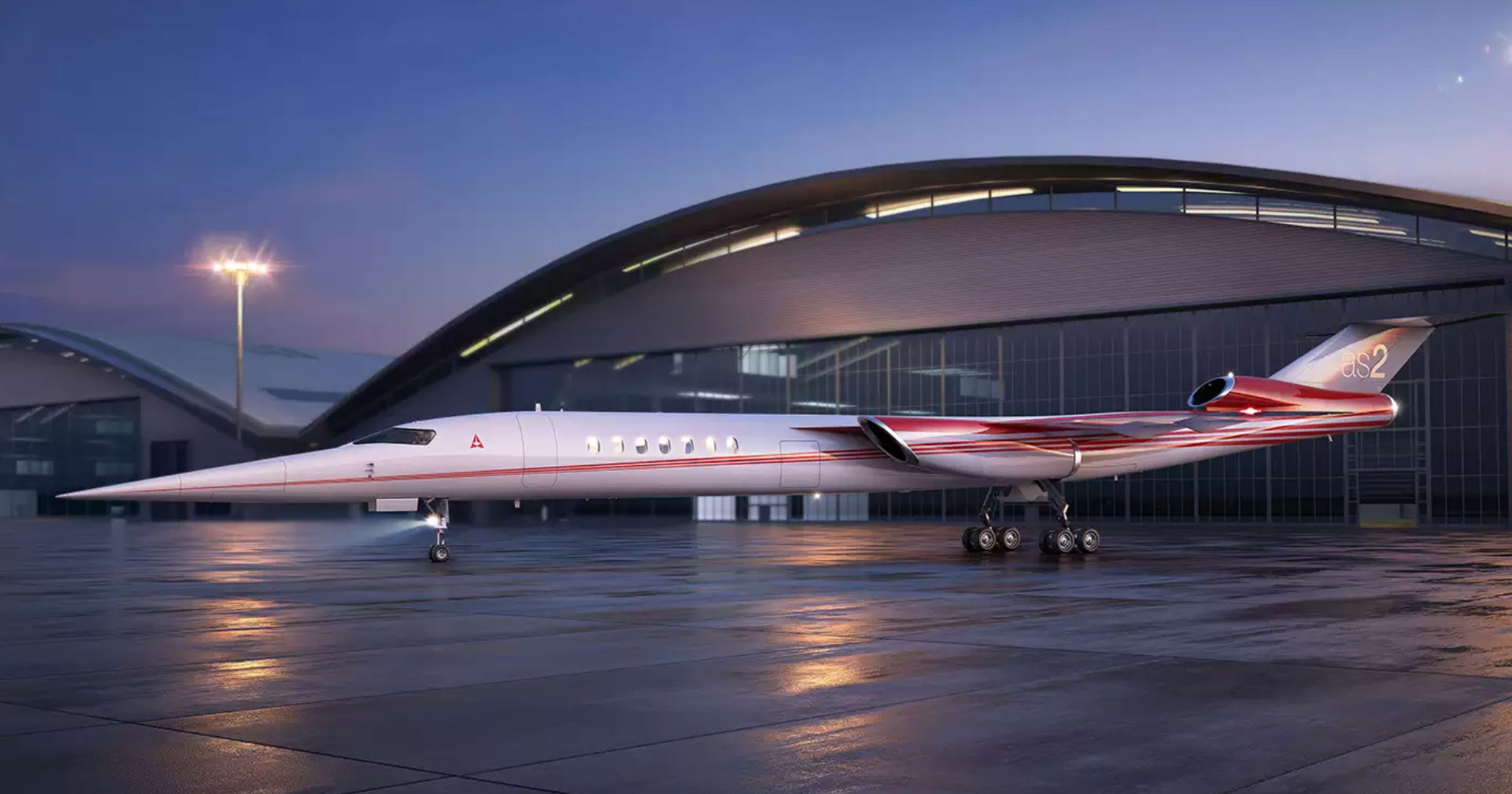
As the company helps develops and build NASA’s pioneering x-plane, it will also be working on the AS2 which will have to be FAA certified. At the same time the Skunk Works is also pioneering new high-speed technologies in the defense realm, namely in the form of a hypersonic unmanned aircraft dubbed the SR-72. Clearly these efforts will have synergistic properties that could give the company a huge leg up over potential high-speed aircraft competitors.
Combining the experience from these separate but conceptually related projects in the mid to late 2020s could usher Lockheed back into the commercial aircraft prime manufacturer space—a sector it abandoned decades ago after the L1011 didn’t meet its financial goals.
Before then there is a lot of work to do of course, with NASA laying out three major phases for its new x-plane initiative:
“The program is divided into three phases and the tentative schedule looks like this:
- 2019 – NASA conducts a critical design review of the low-boom X-plane configuration, which, if successful, allows final construction and assembly to be completed.
- 2021 – Construction of the aircraft at Lockheed Martin’s Skunk Works facility in Palmdale is completed, to be followed by a series of test flights to demonstrate the aircraft is safe to fly and meets all of NASA’s performance requirements. The aircraft is then officially delivered to NASA, completing Phase One.
- 2022 – Phase Two will see NASA fly the X-plane in the supersonic test range over Edwards to prove the quiet supersonic technology works as designed, its performance is robust, and it is safe for operations in the National Airspace System.
- 2022 to 2025 – Phase Three begins with the first community response test flights, which will be staged from Armstrong. Further community response activity will take place in four to six cities around the U.S.”
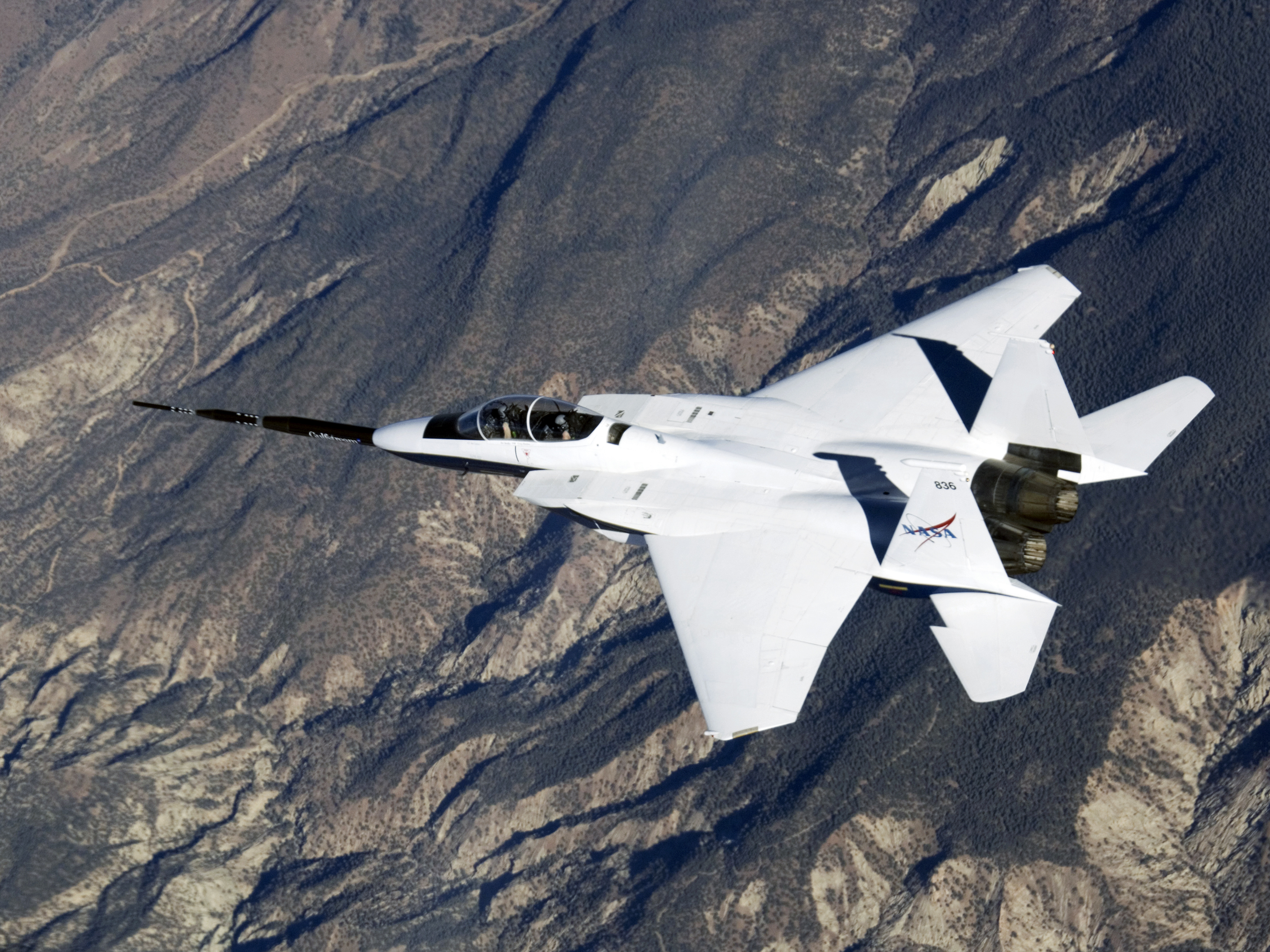
We don’t know what cities NASA is eyeing and why for its supersonic test ground, or exactly how their populations will participate in the test flights. Yet one thing is for sure, having an entire city go outside and look up, while also listening carefully, as an exotic and potentially game changing experimental plane zips overhead at blistering speed is sure to become a pop culture phenomenon. It will also likely inspire a lot of young people who may be thinking about a career in STEM.
Getting the American population involved with the program and making big headlines in doing so is an ingenious move by NASA who needs support from the American people for its various initiatives. Just as the old adage goes: ‘no bucks, no Buck Rodgers!’
It’s amazing to think that some 75 years after Chuck Yeager shattered the sound barrier in the X-1 we would still be trying to figure out how to make sustained supersonic air travel over land feasible. But better late than never, and above all else it’s truly exciting that NASA is back in the x-plane business in such a dramatic and captivating way.
Contact the author: Tyler@thredrive.com
